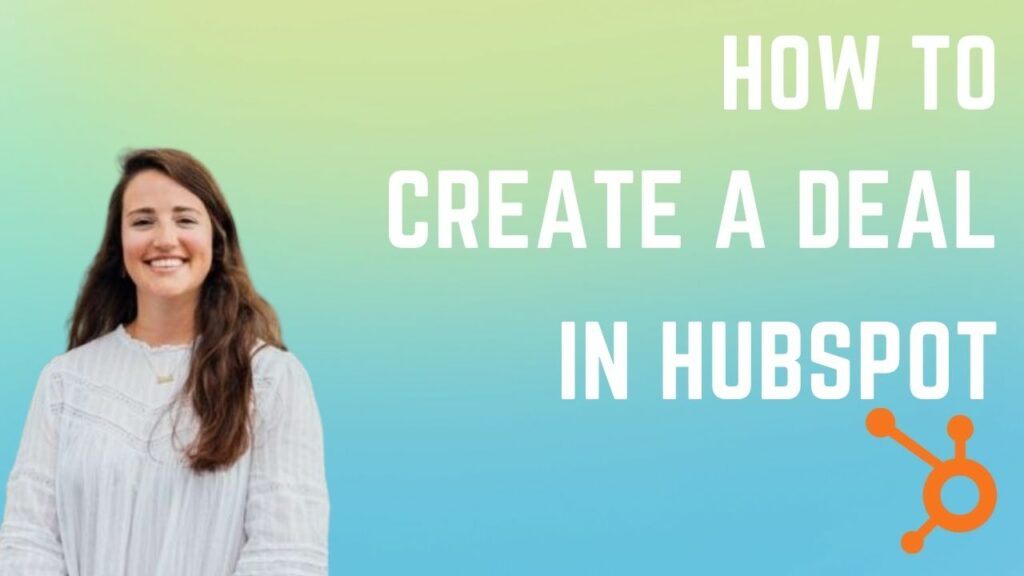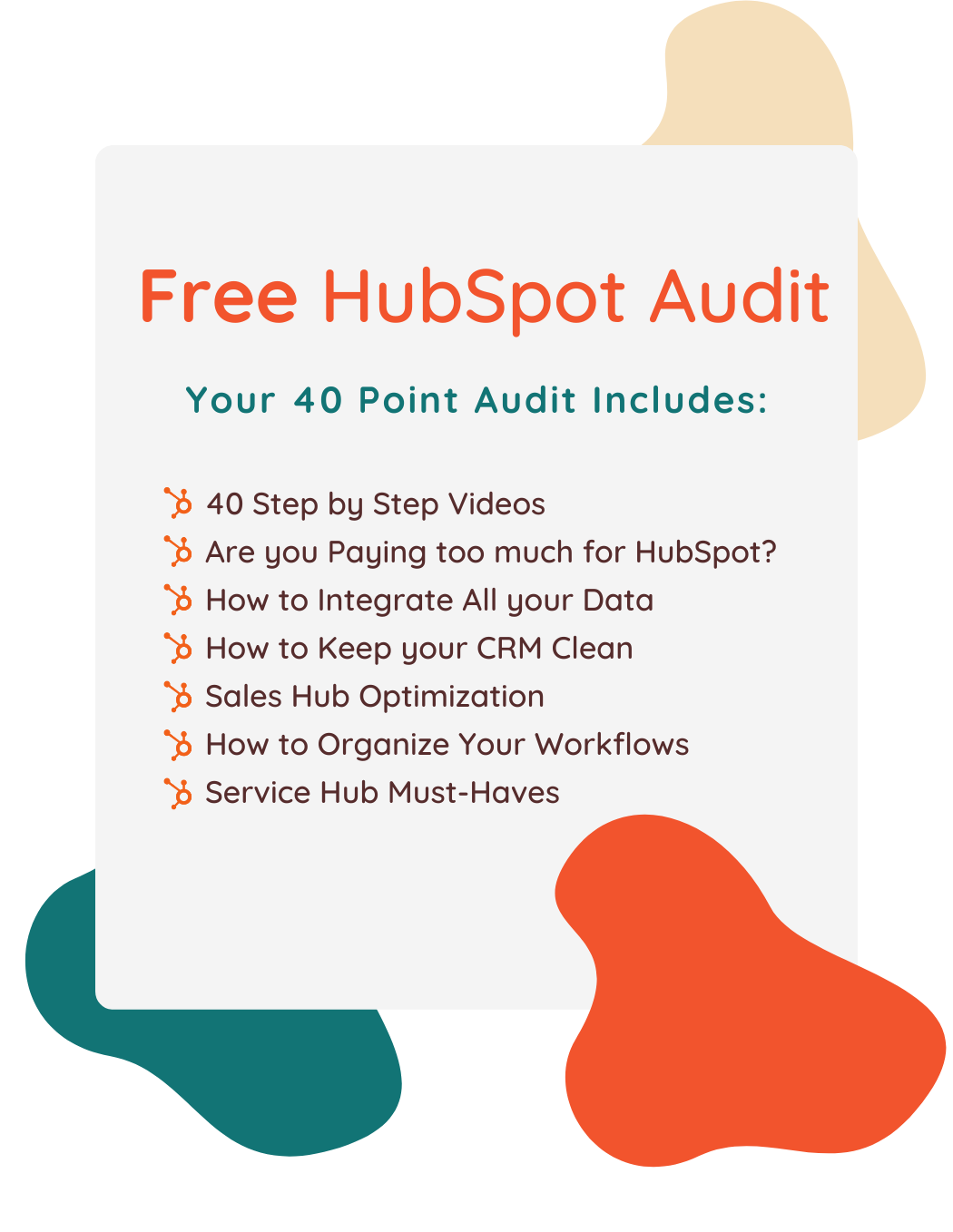How to Create a Deal in HubSpot

Written by
Good Team
Created on
June 20, 2022
How to Create a Deal in HubSpot
It may seem like a simple task to understand, how to create a deal in HubSpot, but if you’re new to the CRM all those words come across as overwhelming. I can still remember the first time I logged into HubSpot, I was so confused by deals, activity feeds, properties. Honestly, it’s why I make videos now, to help people understand the software as they first begin using it, or begin using a new part of it. So today the video I’ve got for you is How to Create a Deal in HubSpot.
Like I said, it’s not a complicated task but there are a lot of steps and you want to make sure when you create a deal in HubSpot you’re doing it properly or at least creating a proper system for everyone at your company to duplicate.
Watch below to learn how to create a deal in HubSpot:
Here are the steps on how to create a deal in HubSpot:
- Click sales
- Click deals
- Click your pipeline
- Create deal
- Name deal
- Deal Stages
- How much the sale is worth
- Sales cycle
- Deal owner
- Deal type
- Priority
- Associate a contact and company
- Product associated with deal
- Create
That’s it! Now you know how to create a deal in HubSpot!
What is Good Team?
Good Team is a HubSpot Partner Agency, as a Certified Solutions Partner with HubSpot we are committed to helping companies grow better. We do that in many ways: Management, Projects, Support, or Resources.
Fill out the form below to access our 40-point DIY HubSpot Audit with Videos!
If you aren’t able to watch How to Create a Deal in HubSpot, read the captions here:
Hello this is Frances
from good team, and I’m going to show you how
to create a deal in HubSpot.
This may seem like a
pretty simple task, but if you’re new to HubSpot
and the sales functionality in the software, it can
be a little overwhelming trying to understand what
the purpose of deals are and the pipelines.
So what we’re going to
focus on in this video is how to create a
deal in HubSpot and make sure that all the information
you need on that deal is associated properly,
so that as the deal moves to the pipeline, that
information stays the same.
So if you’re on your
homescreen, you’re going to navigate
to Sales and deals. And you’re going to go to
your whatever pipeline. You’ve created for this one.
We’ve created a sample
pipeline called sales pipeline. So these are deals here. We’ve created two deals that
are kind of just sample deals. So let’s say there’s two
ways you can create a deal in HubSpot.
One is through automations,
through workflow. If you have marketing, pro or
any other higher subscription, you’ll be able to do
that through workflows.
But if you don’t,
maybe you’re on starter or you don’t have any marketing
that you’re paying for, then you will have to
manually create these deals.
So pretty simple. What you’re going to do is
just click Create deal up here. Then you name it. Typically we name it
whatever the prospect’s name is, or maybe the
company name and what they are interested in.
So for us we are a
marketing agency, so this would be test deal
interested in HubSpot support. Its pipeline is
the only pipeline.
Therefore, it’s great how you
can choose any other ones. Then you’ve got
your deal stages. So these are just
default deal stages that HubSpot creates when
you create an account.
But the idea is that you’re
moving a deal through their, their journey of
your sales cycle. So they schedule an appointment,
you’ve had the appointment and they’re now
qualified to buy.
It’s a good relationship
on both parts. So the next step is to present
them with whatever product or service that you have.
So you want to make sure that
a presentation scheduled then on their end, all the decision
makers need to be bought in. Once everybody’s bought in,
then you send over the contract.
And if they sign it and
they pay their invoice, then it’s closed one. But if they decide it’s
not a good fit or maybe not a good time, then it
moves to close loss.
So essentially it just
works the same way as some kind of
internal sales system that you may be using already. It just digitizes it.
So for this example,
we’re going to start them at the beginning of
their prospecting journey and we’re going to move them
into appointment scheduled.
Here’s where you can set how
much the sale would be worth. So let’s say it’s 150.
And when you project that
the deal should close. So if you know that your normal
sales cycle is 7 days long, you can project it to always
be seven days later for maybe longer deals, maybe
it’s a three month deal.
So you want to set it
out a little bit further. Here’s where you’re going
to set the content owner. The deal owner. So whatever sales rep is
in charge of that deal, this is where you’re
going to select them.
Here is your deal type. Isn’t an upsell or is
it brand new business? We don’t use that property, so
we just keep it blank there. Then you’ve got priority.
If you have a lot of
deals that are coming in, maybe there are some that are
hot and they’re ready to buy and some that maybe need
a little bit more time.
This is just
further segmentation on where they are in
their buyer’s journey. All right. So then you’re going
to associate the deal with a contact in a company. This is really important.
If you want to use any sort
of automation or snippets or templates or any of
the kind of smart tools that HubSpot has,
you’re going to want to need to associate a
contact and company so that it can pull that property in to
automatically populate for you.
So we’ll say this
is a sample contact. And he spot. Which is not in their. We don’t have any companies.
So we’re going to
keep that like. But you would associate
a company in the same way that you associate a contact. Companies have the exact
same type of records that contacts do.
So it’s almost like
a separate entity that HubSpot pulls data from. Then if you have
services or products that are inputted into
Hubspot, this is where you’re going to choose
that product to associate with the deal. This is great for reporting
and data gathering.
If you want to see
how many, how long it takes to sell a specific product
or how many people are buying after a specific
time, or what reps are selling a specific idea.
So if you want
further reporting, you can add some products
to your product library. After that, you
can click Create. And what’s going
to happen is it’s going to populate the deal.
Or if you’re rapidfire
mode and you’ve got ten, 15, 20 deals
to create, then you can click Create
and add another, and it will just refresh this
page and bring up a new box.
But for this example,
I’m just going to create. You’ll see that our deal exists. Again, this is very
similar to contact records.
You’ve got contact records,
company records, deal records, tickets. There’s all sorts of records
that they all kind of have the same functionality.
But this is where all of
the information and activity is going to pop up
regarding this deal. So if you go back
to the deal board.
You’ll see that our deal exists
here in appointment schedule. So as the prospect goes
through their journey, then you’ll just drag
and drop the deal depending on where they are
in that, what stage they’re at in their buying process.
If you have marketing pro
or any higher subscription, it is so valuable to start
to create automations that associate with your
deal pipelines, follow up emails,
internal notifications, sending out documents.
There’s a whole
lot that you can do if you have a really
set pipeline on the deal side and the sales
side of your business.
So that’s how you create
a deal in HubSpot. Seems simple, but can
get pretty complicated.
Get Your Free DIY 40-Point HubSpot Audit with Videos!

